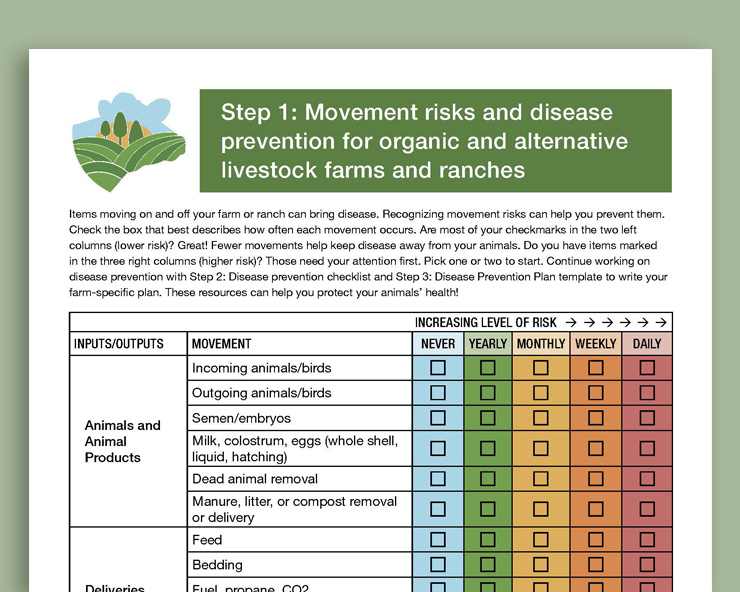Items moving on and off your farm or ranch can bring disease. Recognizing movement risks can help you prevent them. The Livestock Project has created a Step 1: Movement risks checklist that can help you recognize and think about the types of movements that happen on your operation. In addition, the checklist can help you take the necessary steps to make those movements as safe as possible. The movements themselves and how often they occur are the key ideas to keep in mind. Major categories of movement risks are – animals and animal products, vehicles and equipment, visitors and personnel, and wildlife and pests.
Animals and animal products
It’s always exciting to add new animals to your herd or flock. Additions often bring added production and improved genetics. But, it pays to be cautious. New or returning animals can bring in new diseases. Having an area to keep these animals separate from your home herd, as well as an area to isolate sick animals, is essential. For more information see Safely introducing new or returning animals to your herd
Vehicles and equipment
What kinds of vehicle or equipment movement occurs on your farm? Have the vehicles that come onto your property been to other animal operations? If so, they could spread disease to your farm. Some examples include:
- Animal delivery trucks or trailers
- Milk trucks or egg transport vehicles
- Dead animal or manure removal trucks
- Feed, bedding, fuel, or propane delivery trucks
- Mail, package, or supply delivery
- Vehicles that belong to workers, family, friends, or other visitors
- Trash or recycling pick up
- Groundskeeping equipment such as skid loaders, mowers, tractors, etc.
See On-farm movement concerns for more information.
People – visitors and personnel
One of the best ways to teach people about agriculture is to show them firsthand what happens on your farm. This can be through an onsite store, farm tours, or holding workshops on your property. You may need extra farm help and hire an employee or have a friend wanting to learn the ins and outs of alternative farming.
No matter the reason for extra foot traffic, each new person can increase the likelihood of introducing new germs to your farm. You have options on how to prevent this from happening. For more information, see our blog post on Keeping your organic and alternatively raised animals healthy when you have visitors (including workers)
Other – wildlife, rodents, birds,
Animals that can cause problems on your farm include rodents, deer, feral swine, foxes, coyotes, and birds. While it is impossible to completely eliminate your animals’ exposure to the surrounding wildlife, there are some steps you can take to decrease the risk of disease spread, predation, and property damage.
For more information, see our Managing wildlife and pests on your organic/alternative farm

